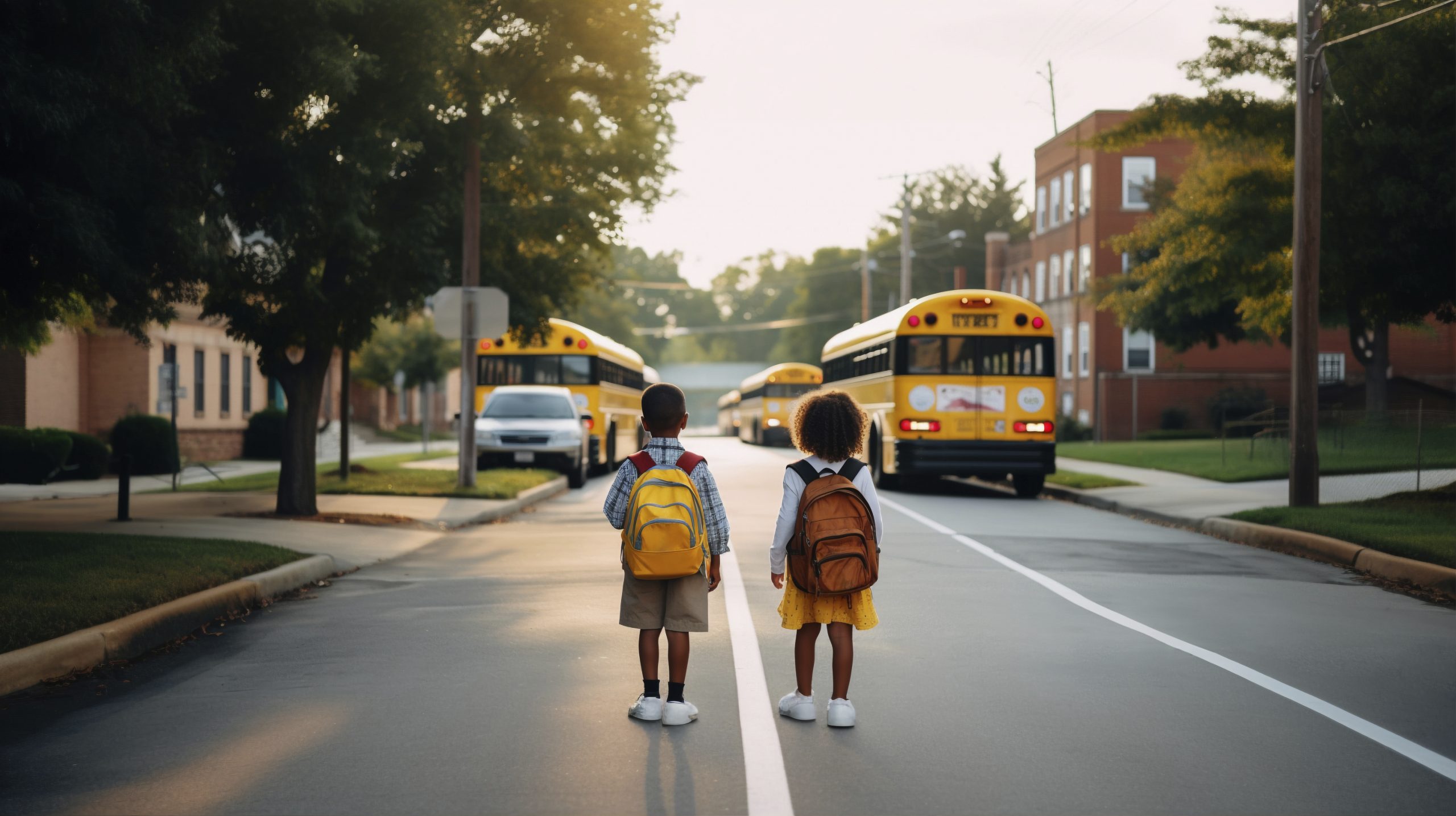
How School Bus Route Planner Software Improves Student Safety
Student safety is a top priority for schools, parents, and transportation authorities. Each day, millions of children rely on school buses to travel to and from school, as well as for extracurricular activities and field trips. While school buses are one of the safest modes of transportation, ensuring the safety of students during these rides depends largely on the planning and management of the routes. But with the advent of technology, particularly school bus route planner software, these challenges are becoming easier to address, ensuring that students are not only transported on time but also in the safest possible conditions.
School bus route planner software uses advanced algorithms and GPS tracking to optimize routes, manage bus schedules, and monitor the safety of the buses in real time.
It helps school districts and transportation teams plan safer routes, avoid dangerous areas, and monitor the buses as they make their rounds. In addition to enhancing the safety of students, the software improves operational efficiency and communication, providing peace of mind for parents and school administrators.
In this blog, we’ll explore how school bus route planner software plays a pivotal role in improving student safety, offering a glimpse into the technology’s benefits and how it contributes to creating safer transportation systems for students.
Challenges in School Bus Safety
Ensuring the safety of students during their commute to and from school is a complex and ongoing challenge. School transportation must navigate a variety of risks, and without proper planning and monitoring, even the best-intentioned systems can falter. Some of the most common challenges schools face in terms of bus safety include:
1. Inaccurate or Inefficient Routing
One of the most significant challenges in school bus safety is poor route planning. Without an efficient system in place, buses may travel longer than necessary, taking routes that are either unnecessarily congested or prone to dangerous conditions. In some cases, the bus routing can even cross through unsafe neighborhoods or areas with high traffic, posing unnecessary risks to students.
Manually planned routes or traditional paper-based systems can result in errors, inconsistencies, or outdated information, further complicating the situation. As a result, bus routes may not be optimized for time, safety, or efficiency, which can impact the overall safety of students.
2. Lack of Real-Time Monitoring
Without real-time tracking, there is no way to know the exact location of a bus, especially in cases of emergencies or delays. When students are on the bus, parents and school administrators rely on accurate updates to ensure that the ride is proceeding as planned.
In the absence of real-time monitoring, responding to delays or unexpected route changes becomes much more difficult, and important safety measures, like adjusting the route in case of hazardous weather conditions, cannot be immediately implemented. This lack of visibility increases the likelihood of students being stranded, late, or potentially exposed to safety risks.
3. Traffic Congestion and Unpredictable Delays
Traffic is a common issue in school bus transportation, especially in urban areas. Without an efficient system for adjusting to changing conditions, a bus may be delayed due to traffic congestion, accidents, or roadwork. These delays can cause missed pick-ups, late arrivals, and an overall lack of punctuality.
More critically, buses caught in heavy traffic might be forced to take longer routes or may be stuck in areas that are less than ideal in terms of safety. Whether it’s waiting in a high-traffic zone or traveling through areas with high accident rates, traffic delays can compromise the safety of students if not addressed promptly.
4. Unpredictable Route Changes
Unforeseen circumstances, such as construction work, accidents, or road closures, can force bus routes to be changed on the fly. If a route change is not immediately communicated to drivers, parents, or school officials, it may create confusion, leading to missed students or buses taking unsafe detours.
Without a system in place to quickly and accurately update the routes, buses may end up on unsafe paths or be late for pick-ups, leading to potential safety concerns. In emergencies, the lack of swift communication can exacerbate the risk to students and drivers alike.
5. Communication Gaps
Communication is key to ensuring the safety of students during their commute, yet many school districts still rely on manual methods such as phone calls, notes, or physical check-ins. These systems are often slow and prone to human error, which can lead to miscommunications, delays, or lack of clarity on critical issues.
For example, if a bus is running late, parents may not receive immediate updates, leaving them anxious and unsure about their child’s whereabouts. Similarly, school officials may not be aware of issues on the bus, such as mechanical failures, health emergencies, or behavior problems, until it’s too late.
These communication gaps make it difficult to respond to situations quickly and effectively, which in turn can affect student safety.
6. Overcrowding and Inadequate Seating
In many districts, buses are frequently overcrowded, especially during peak school hours. Overcrowded buses can lead to unsafe conditions, not only in terms of student behavior but also in emergency evacuation situations. If the bus is filled beyond capacity, it could potentially cause discomfort, increase the risk of accidents, or impede the bus driver’s ability to maneuver the vehicle safely.
In addition, poorly managed bus routes might result in certain buses being overbooked while others are underutilized, creating an imbalance and making it harder to ensure that all students are safely accommodated.
How to Make a School Bus Route?
When planning a school route, the goal is to ensure that the bus travels efficiently and safely while accommodating all students’ needs. The process involves mapping out pick-up and drop-off points, considering factors like safety, travel time, and school schedule. Proper planning is essential to avoid delays and ensure that students reach school and home safely.
Here’s a step-by-step approach to creating a school bus route:
1. Gather Information
Start by gathering essential details such as the school’s location, student addresses, and the number of students needing transportation. It’s also important to understand the number of buses available and their seating capacity. Understanding the school’s start and end times will help you determine when pick-ups and drop-offs should occur.
2. Map the Route
Using a map, plot all the pick-up and drop-off locations. You can use online tools like Google Maps to help visualize the route. Aim for the shortest possible route while ensuring that it’s safe for children, taking into account factors like road conditions, speed limits, and traffic.
3. Consider Student Demographics
Think about the different age groups of the students and how this might affect the route. Younger children might need bus stops closer to their homes, while older students could be grouped into fewer stops. If there are students with special needs, make sure the route accommodates them with the necessary accommodations, such as ramps or more time at each stop.
4. Timing and Frequency
With the route mapped out, the next step is determining the pick-up and drop-off times. Be sure to build in time buffers to account for unexpected delays. You also need to make sure that the bus doesn’t arrive too early or too late at the school or student homes.
5. Test the Route
Before the bus route is finalized, it’s crucial to test it out. Take a trial run to check if the route is safe, the timing is right, and all pick-up and drop-off locations work smoothly. Adjustments might be needed if there are issues with traffic or timing.
6. Communication
Once the route is finalized, notify the parents and students. Provide them with details on the exact times and locations for pick-up and drop-off. It’s also important to make them aware of emergency contact procedures in case of delays or other issues.
7. Implement and Monitor
After implementing the route, it’s a good idea to track the buses with GPS if possible. This ensures that the bus stays on schedule. Additionally, continue to monitor the route regularly for any changes, such as new students or road closures, and adjust the route if necessary.
By following these steps, you can create an efficient and safe school bus route that meets the needs of both students and parents while maintaining a smooth operation for the school.
How Bus Route Planning Software Ensures Student Safety?
A school bus route planner software prioritizing student safety typically includes features designed to ensure the secure transport of students from home to school and back. Some essential features might include:
A. Real-time GPS Tracking
Allows school administrators and parents to track the bus location in real time. This helps to monitor the route and ensure the bus stays on schedule, providing peace of mind for parents.
B. Emergency Alerts
Sends instant notifications to parents and school authorities in case of delays, detours, or emergencies. This can include accidents or traffic issues.
C. Route Optimization
Ensures that routes are planned to be as safe and efficient as possible, avoiding high-risk areas like busy streets or unsafe neighborhoods, and reducing travel time.
D. Driver Monitoring
Features to monitor driver behavior, such as speed, braking patterns, and driving time, can help ensure safe driving practices.
E. Parent and School Communication
Parents can receive updates and alerts about the bus’s arrival or delays. Schools can notify parents in case of any changes.
F. Geo-fencing
This feature allows schools to define safe zones for bus stops and student pick-ups/drop-offs, sending alerts if students are picked up or dropped off outside the designated area.
G. Student Attendance Tracking
Tracks which students get on and off the bus at each stop, ensuring no student is left behind.
H. Mobile App Integration
Both parents and schools can have access to the system through an app to receive updates and track routes on their smartphones.
I. Safety Protocols
The system may include features for checking whether buses are equipped with safety equipment such as cameras, seat belts, and emergency kits.
J. Access Control
Only authorized users of bus route software (drivers, school personnel, or parents) can access sensitive routes and student information, ensuring privacy and security.
Are you looking for a trusted school bus route planner software for your institution? You can consider AllRide!



